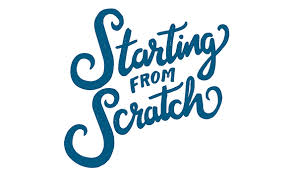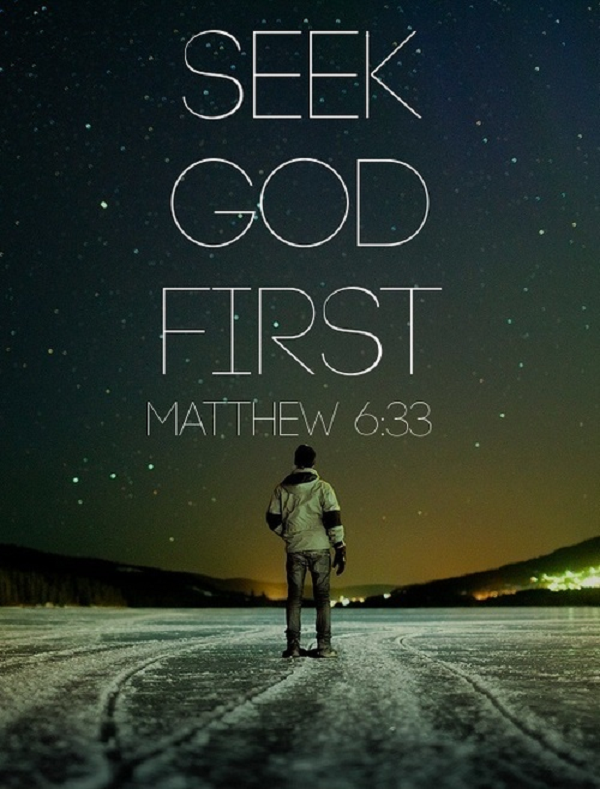Jennifer Wright
From "Rainy Day" to "Savings" to "Endowment"—We Need All Three
by Kirk Walden, Advancement Specialist
Making the case for an endowment begins with not only knowing what an endowment is, but also understanding what it is not.
For instance, an endowment is not our Rainy Day Fund. Every ministry needs to have some cash on hand for times when giving slows, so that the work goes on and staff is paid. Experts tell us that having 3-6 months of cash on hand—just in case—is a good number.
Also, our endowment is not our savings fund for a future project. If our board of directors is wanting to set aside funds for a new initiative, a building fund, or to invest in a new staff member, this would be separate from an endowment.
With an endowment, we build a principle amount and either withdraw interest earned (some or all—this can be a board decision made annually), or a specific amount (Ex.: "We will withdraw $5,000 per year for budget purposes, unless endowment gifts are under the withdrawal amount.") on a pre-determined basis.
We can be flexible with endowment withdrawals, based on need. Or, we can let the endowment grow for a period of time, with no withdrawals.
Overall, our goal with our endowment is to continue to grow its principle so that more and more of our basic ministry needs are met with these funds.
Endowments can be general (for the overall budget) or specific (an endowment for our medical arm, for instance). We can also have multiple endowments. As an example, should a donor family want clients to receive Bibles, an endowment can be created (a minimum amount for an endowment should be established by the ministry; perhaps $10,000 is a starting point).
With multiple endowments, a donor may ask, "How can I give toward your abstinence program?" and we would be able to respond, "We can direct a portion of your gift toward today's need, and set aside a percentage of your gift in our Abstinence Initiative Endowment." This allows us to be more creative in building our resources; but more important, allows donors to be more involved in where their gifts go and how they are used.
Every ministry needs its Rainy Day Fund, and when new ideas arise, Capital Funds can get us started toward funding these ideas. In addition however, Endowments make sense and as we will see elsewhere in this issue, help us raise more funding.
Click here for more of this month's Advancement Trends in the Life Community.
Why an Endowment is Attractive to Donors
by Kirk Walden, Advancement Specialist
Endowments are not only a good idea for our ministries as we look to the future, they are also a strong avenue toward attracting donor interest and support today.
First, endowments allow donors to see their gifts (to the endowment) as more permanent. Knowing that a gift is not going into the ministry account only to be spent within days is attractive to certain donors; especially those who can give major gifts.
Second, simply having an endowment tells our financial partners we are in this for the long haul. This long-term outlook gives us more credibility and lends itself to more gifts.
Third, as an endowment begins funding (even small) portions of the organization, we can communicate this to our donors. They are more likely to respond to our future requests because they see their gifts as funding "bigger" aspects of the ministry.
Finally, keep in mind that endowments are a particular niche for—as we mentioned above—certain donors. They are attracted by the concept of saving for the future, and of a "permanent" fund that keeps their gifts mostly intact—giving those gifts longevity.
As an example, when your author became an executive director I noticed we had almost no memorial or honorarium gifts. To spark interest in this type of giving, we created our "Commemorative Fund" whereby all gifts went into an account where only the interest earned would be used for the ministry.
Immediately, after implementing this idea (and the fact that we placed memorial gifts and gifts in honor of the living on our response devices), these gifts soared. Our fund grew into the tens of thousands of dollars over a few years, after receiving just $25 in the year before changing our approach.
An endowment then, is not only a way to fund the future; it can also be an avenue to reach donors in a new—and for many, a more attractive—way.
Click here for more of this month's Advancement Trends in the Life Community.
Starting an Endowment from Scratch
by Kirk Walden, Advancement Specialist
"We don't have anything like an endowment," I'm told by many pregnancy help organization CEOs. If this is the case, starting at zero means something good: We are starting! From any beginning point, we can build, step-by-step. Here are several ideas:
Start with Commemorative Gifts
You'll find in the article, "Why an Endowment is Attractive to Donors" the idea of taking gifts in memory of a person (or in honor of a living person) and placing them in an account where only the interest is used for advancing the ministry. This is an endowment.
If you are currently using many of your memorial and honorarium gifts as part of the budget, you can take even a percentage of those gifts and place them in the new endowment, so as not to harm your current budget. You might find that these gifts rise when you make the announcement.
Announce your intentions publicly in E-blasts, newsletters and appeal letters. Make sure response devices (in print and on your donor web site) clearly point out where these gifts will go and how they will be used.
As an example, if your ministry receives an average of $250 per month in these gifts, placing them all in an endowment will give you a $3,000 endowment in your first year. It's a start, right?
A percentage of each gift . . .
As we look at starting, consider placing a percentage of every gift in your new endowment. At just 2 per cent, a center with a $200,000 income budget will place $4,000 in an endowment in that first year. Again, we have a beginning!
Ask!
Why not place one more appeal letter in your yearly development plan and ask specifically for gifts toward a new endowment that one day will fund a large portion of the ministry? Recipients can be reminded that these particular gifts will "keep on giving" for generations to come.
This is a way to not only begin a fledgling endowment; this letter will identify those who are endowment minded and who may be capable of continuing to build your endowment in the future.
The key to starting an endowment is getting started. Even a "small" start is a start.
Click here for more of this month's Advancment Trends in the Life Community.
Endowments Should Provide Income—Let's Get a Return on Our Investment!
by Kirk Walden, Advancement Specialist
Endowments, even "small" ones, can begin providing regular income for your organization. But with interest rates so low, where do we go to find that income?
This is where a financial advisor comes in. The board can choose a financial advisor by asking interested parties to "interview" for handling the endowment funds on behalf of the ministry, or perhaps there is a trusted advisor who will invest the funds for the board on a pro bono basis.
To fulfill its fiduciary responsibility, the board appoints the advisor to make day-to-day decisions and report back to the board regularly, so the board is aware of the account's status. This way the advisor is not constantly asking the board, "Can I move this portion of the fund into cash? May I invest in this particular mutual fund?"
In this scenario, the board sets parameters with the advisor and gives the advisor its capacity for financial risk. Boards are generally risk averse; a good thing. But, "no risk" can mean "no return." A board that balances its concern over immediate risk with an eye to long-term objectives does well. In the end, a ministry is going to be more conservative in its investment risk than many individuals, but will always have a percentage of its funds in stock funds.
Two quick notes
First, a ministry may want its stock investments to reflect the ministry's views on abortion, not wanting to invest in companies that choose to support the abortion industry. There are mutual funds available with this in mind. Consult with a financial advisor.
Second, a board does not want to weigh itself down with managing individual stocks given by donors. A good policy is to take any individual stock gifts and sell them, turning the stock into cash. From there, the financial advisor (in the case of an endowment) can invest the funds with the overall investment plan in mind.
Click here for more of this month's Advancement Trends in the Life Community.
Thank you letter - February 2015
Each month Advancement Trends in the Life Community brings to you a "thank you letter" that you can send to your donors. February's letter is below:
Dear Joe and Jane,
February means Valentine's Day; a time when many of our young people are desperately "looking for love." Young people want to know they are valued—loved. Yet, we see many who are sold the idea that love somehow must involve intimate physical involvement.
And whether through TV, online, other media or from friends, too often our clients are led to believe that physical involvement is the very definition of love.
When they come in our door however, these valuable young people are offered a life-changing, counter-cultural message they aren't getting on MTV, the most popular web sites or on their IPod.
We want each person who comes our way to know what love truly is, to know that love comes without conditions, and to realize that they can love and be loved, and that waiting for marriage is a concrete, powerful way to show true love.
Your gift makes this possible, and because of your gifts young people are not only hearing this message here, they are responding positively. As we talk with those who come to us, we see more and more that teenagers desperately want to know what the standards should be, and want to believe they can live up to those standards.
Young people want to be loved. But more important, they need to know what love is. Your support is making that happen, and we appreciate you.
Sincerely,
CEO
by Kirk Walden, Advancement Specialist
Click here for more of this month's Advancement Trends in the Life Community.
Click here to download this thank you letter as a word document.
What Happens "Beyond the Budget?"
by Kirk Walden, Advancment Specialist
Boards of Excellence
As board members, a primary responsibility is to monitor the budget and make sure the organization is wisely stewarding the funds entrusted to its care. At the end of the year, a reasonable goal is to finish with more funds in the bank than when we started, right?
Yet if a board isn't looking at what happens "after the budget," it is missing the bigger picture.
Beyond the budget, we must consider the amount of funds we are setting aside for next year, the next and the next. Ultimately, we must lay in place a financial foundation for future boards, staff members and most important, those who come in our doors as clients.
For forward-thinking organizations, an Endowment provides this foundation. Webster defines "endowment" as "a large amount of money that has been given to a school, hospital, etc., and that is used to pay for its creation and continuing support," but we can go further. For our non-profit organizations, an endowment is a fund we can draw upon (whether we use only the interest accrued or choose to withdraw a certain amount each year) to fund different aspects—or a large portion—of our ministries.
Every non-profit organization needs to at least carefully consider an endowment. Used wisely an endowment can be a perfect blend of faith and stewardship, two attributes that should complement each other.
Whether a ministry is launching an endowment or looking for ways to grow this fund, one starting point is the ministry budget. Placing a line item in the budget for the endowment reminds us each month that a portion of today's funds should go toward a better tomorrow.
Whether we start with $50 per month or $5,000, we are on our way to a brighter, more successful future for our ministry.
Click here for more of this month's Advancement Trends in the Life Community.
We are on the move—and those opposed to us are afraid. Very afraid.
by Kirk Walden, Advancement Specialist
The recent news out of Maryland—and the Centro Tepeyac Silver Spring Women's Center—sends us a strong message: Pregnancy Help Organizations are becoming much more effective, and those who wish to protect abortion-on-demand at all costs are getting frantic.
LifeSite News covered the story. In short, NARAL Pro-Choice Maryland worked with the Montgomery County Council to create a 2010 law forcing Centro Tepeyac to post signs declaring when medical personnel were not on site. The law of course, was designed to slow down; even stop, Centro Tepeyac from reaching out to women.
The good news? After four years of fighting, Centro Tepeyac won. Big.
At different stages, three judges struck down the law, with the final ruling coming from a Bill Clinton-appointed judge who fined Montgomery County $375,000 for violating the rights of Centro Tepeyac.
NARAL's president in Maryland didn't give up however, and private emails show both she and the president of the Montgomery County council attempting to collude on other ways to shut down Centro Tepeyac.
What does this tell us? The abortion lobby and its clinics are afraid. They are losing business while pro-life pregnancy centers and medical clinics are gaining ground. (Check out Peggy Hartshorn's argument to that effect here.)
In essence, just like Nehemiah built a wall of hope for the people of Israel in the Old Testament, we are building a pro-life Wall of Hope today, and just like Nehemiah, opposition is everywhere, trying every tactic imaginable.
Our modern day Wall of Hope is composed of thousands of pregnancy help organizations and ministries, places where moms, dads and children can come for safety, away from the deception of the abortion industry.
Tweet this: The Maryland case leaves no doubt – our Wall is rising.
Nehemiah faced incredible opposition, just as we do. Men like Sanballat, Tobiah, and Geshem were constant thorns of criticism, mocking, and scorn. They tried every avenue to shut down the work on a wall that would protect the Jewish people.
Nehemiah would have none of it. At one point Nehemiah was asked to come down off of the wall for a "meeting" with his enemies. Nehemiah knew the meeting was nothing but a plot to kill him, so he gave his detractors a terse response: "I am doing a great work and I cannot come down. Why should the work stop while I leave it and come down to you?" (Neh 6:3)
We—all of us in the pregnancy help community—are involved in a great work. The detractors will continue with their lobbying, their public relations campaigns against us, and their collusion with politicians to enact laws to stop us.
But friends, we are building a Wall of Hope. We will not come down off of our wall until we are finished.
And if the news out of Maryland is any indication, we may be closer to completing our Wall of Hope than we can imagine.
Get Kirk's new book, The Wall at amazon.com today!
At a time when our social and political structure is aligned against the most innocent among us, The Wall brings tremendous hope and vision. Though we’ve experienced a generation of tragedy following the 1973 Roe v. Wade decision, The Wall reminds us that it is often when hope seems lost that God orchestrates extraordinary victory through ordinary people. In addition, The Wall shows that surprisingly, today is the perfect time for creating a new culture of life in America. Get ready to be inspired; and be prepared to take your place building The Wall.
Worrying vs. Seeking God
by Anita Keagy, JoyShop Ministries
"Therefore I tell you, do not worry about your life, what you will eat or drink; or about your body, what you will wear ... but seek first His kingdom and his righteousness, and all these things will be given to you as well." Matthew 6:25 & 33
I will never forget the day when Jesus got my attention as I cried out to Him for abundant life. Up to that point I was living the lifestyle of a hamster running on the ever-spinning wheel! I was tired of worrying about my life, my husband's and children's spiritual lives, as well as keeping up with all the responsibilities that continually filled my day. It was one big burden!
As I looked to the heavens and asked God for the abundant life promised in John 10:10, He immediately brought Matthew 6:33 to my mind. I heard His whisper over my anxious heart, "Anita, you have been living life backwards for many years. Every day you wake up, your day is about you and all you feel you need to get done. You are always trying to squeeze some time with Me and reading my Word into your busy schedule and it's not working. Every day your first priority is to be Me! Time alone with Me and My written Word should be the most important accomplishment for the day. Plan your other activities and many responsibilities around our time together! If you live a lifestyle of seeking Me FIRST, then you can be sure that all the things that you are worried about will be taken care of by Me!"
All of a sudden I saw the truth of how I was living. My daily focus was on all I had to get done that day along with worry and anxieties over the future. But God was asking me to change my focus to seeking intimacy with Him first and then leaving the future to Him.
But what does it really mean to seek first His kingdom? To answer this question I grabbed a dictionary and looked up the key words of this verse.
To "seek" means "to look for, to search intently for, to want to find"! I had to get honest with myself and ask the hard questions: Am I really looking for God? Do I take the time to search for Him? Do I really want to find Him?
Next I looked up the word "first." It is defined as, "Earliest in time or order, foremost in position, rank, or importance." To seek God first means that I will either do it first thing in the morning before I start my day or that I will organize my day around my time with Him! What part of "first" do I not get? First is first!
The word "kingdom" is defined as "a realm where the king's word has full sway." What the king desires is what happens. Every time I open my Bible, I am putting my heart under His sway where my King can get what He desires from my life!
For me, choosing a lifestyle of seeking God FIRST means that every day I am given the gift of waking up, I'm going to begin my day with Him. He is all that matters!
Tweet this! I'm going to begin my day with Him. He is all that matters!
Everything else will fall into place. I want to know Him, find Him and keep seeking intimacy with Him. I have been actively living a lifestyle of seeking God FIRST since that day. This simple discipline has brought the abundant life of Christ and His joy back into my heart! Only one thing is needed: order your day around intimacy with God!

Anita Keagy founded JoyShop Ministries in 2006 with one simple mission: To get people to spend time with God every day through Bible reading and prayer. Since then, she has traveled nationwide and internationally, sharing her message of seeking God first each day as the key to abundant life and joy. Thousands of people have heard and responded to her dynamic message at conferences, retreats, schools and churches.
With a compelling story of how God used a very difficult situation in her life for His glory, Anita shares candidly how she became pregnant as a teenager – all the more “scandalous” because she was a preacher’s daughter – and made the difficult choice to place her daughter for adoption. With tremendous support from family, she heroically bore her child and made an adoption plan. Anita never stopped yearning to know her first-born daughter, even as she married and had four more children. Through a file of letters and the help of her adoption agency, Anita finally met her firstborn 21 years later. God used Anita’s own desire to know her child to impress upon her how much He wants to know His children – us! With that knowledge, a ministry was born that is now thriving and impacting lives every day.
Discover more at www.joyshop.org.
What is it like to be “Poetry in Motion?”
by Kirk Walden, Advancement Specialist
"For we are his workmanship, created in Christ Jesus for good works, which God prepared beforehand so that we would walk in them." Eph. 2:10
As I reflect on Sanctity of Human Life Sunday, I am reminded of this beautiful verse from Ephesians. How wonderful that we are created like poetry – with workmanship.
The words, "Poetry in motion" are generally defined as someone moving gracefully. It's a phrase used to describe anyone from a fabulous dancer to the moves of an elite basketball player.
Most believe that the term began with the 1961 song Poetry in Motion, by Johnny Tillotson. The idea however, may have started much earlier, in the New Testament.
Paul writes in Ephesians that we are God's "workmanship," this particular word coming from the Greek word "Poema." This is the same word of course, from which we glean the idea of a poem. It is not a stretch then, to say that we are in fact, God's poem. We are created to do good works to change our world.
Tweet this! It is not a stretch then, to say that we are in fact, God's poem.
Years ago I heard a children's poet tell a class of elementary students that when writing a poem he often went through more than 100 drafts before finding the words, the rhythm, and the connection his readers needed so that he could say, "Finished."
I doubt God needed 100 "drafts" when creating us. I'm sure He got it right the first time. Yet, we can be assured that just like a poet, God took great care in creating each of us—and Paul tells us He did so for a reason: Good works.
If nowhere else, here we can see the sanctity of our own lives and all human life in God's careful creation!
Serving in a pregnancy help organization truly reflects a desire to do these good works, works God created for us to "walk in them."
Every client, every patient, every resident, every single person we come across is an opportunity to walk in a good work God desires for us to complete.
So take heart. We are God's poems – created in his workmanship – and as we move forward to serve, assist and walk alongside those we see, we are truly "Poetry in Motion."
Resources for Your Medical Director!
Our Medical Directors are a vital part of our Medical Clinics, and provide critical services for us often at their own expense and time. Here are some resources you can pass on to them to let them know how much we all appreciate them and their service to the clinics.
Physicians need 30-50 hours of AMA Category 1 CME to meet the AIUM requirements. Is your Medical Director looking for opportunities to sharpen his/her skills in reading Limited OB Ultrasounds?
American Institute for Ultrasound Medicine: www.aium.org
"Not to be missed is the 38th Annual Advanced Ultrasound Ob/GYN Seminar" http://www.aium.org/soundWaves/article.aspx?aId=865&iId=20150107
Learn From the Experts at the 38th Annual Advanced Ultrasound Seminar: Ob/Gyn
Come to Lake Buena Vista, Florida, this February if you want to expand your obstetric and gynecologic ultrasound knowledge with renowned experts in the field. View the program and register. Join Codirectors Lennard D. Greenbaum, MD, and Frederick W. Kremkau, PhD, along with ultrasound luminaries Alfred Z. Abuhamad, MD, Beryl R. Benacerraf, MD, Joshua A. Copel, MD, Steven R. Goldstein, MD, John C. Hobbins, MD, and Lawrence D. Platt, MD.
This seminar, hosted by the AIUM in collaboration with Orlando Health and the Wake Forest School of Medicine, will be held February 19-21, 2015, at Disney's Yacht and Beach Club Resorts in Lake Buena Vista, Florida. The seminar is filling quickly! Register today and earn up to 13.5 AMA PRA Category 1 Credits.
Do you have a physician who would like to serve your center as a Medical Director but is not trained to read OB scans? Please read through all the options available for them and pass the information along to them.
Below are some great options you can offer to them as resources for both initial training and refresher courses. While Heartbeat does not have any direct knowledge of the courses, these resources were recommended by an RDMS ultrasound trainer who serves in the pregnancy center ministry, and we are passing on the information for the physician to investigate and choose the course best suited for their needs.
Gulfcoast Ultrasound Institute: www.gcus.com
Thomas Jefferson University: http://www.jefferson.edu/university/jmc/departments/radiology/education/cme/ultrasound_courses.html
Wake Forest: http://www.wakeultrasoundeducation.com/courses-and-seminars/obstetrical-ultrasound/
IAME: https://iame.com/conferences/obgyn_ultrasound/
Another Great Resource From the AIUM:
Everything You Want to Know About First-Trimester Obstetric Ultrasound is a great learning tool for which physicians can earn up to 6.0 CME credits.
"After viewing this program, participants should be able to describe the sonographic signs of normal and abnormal gestations and define the role of ultrasound in the early diagnosis of fetal anomalies. The learner attributes are patient care, medical knowledge, and practice-based learning and improvement."
This DVD comes with 5 CME test and evaluation forms that allow you and up to 4 colleagues to earn credits at no extra charge. Need more than 5 tests? Purchase additional sets of 5 tests/evaluations for only $160.00.

